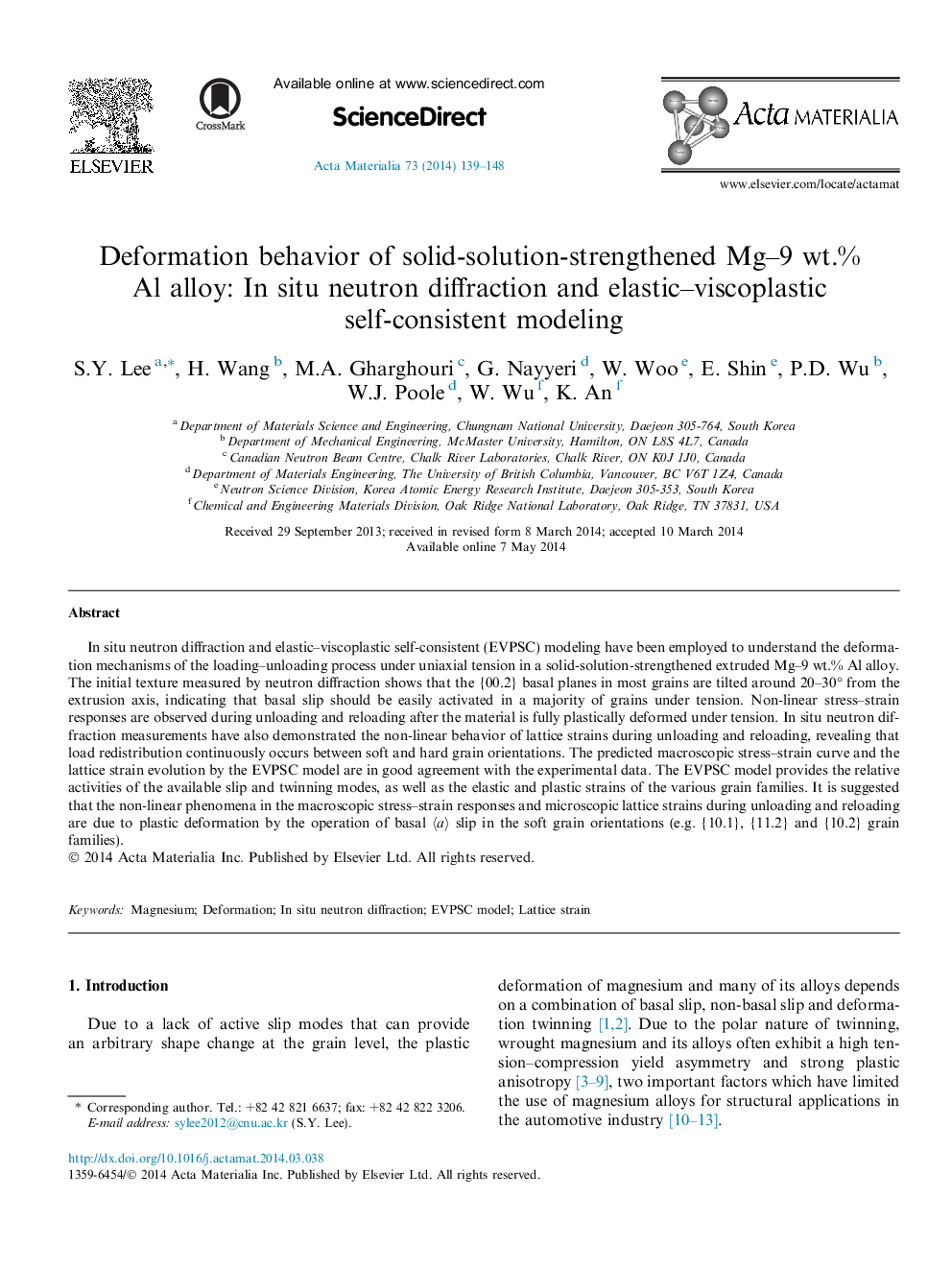| Article ID | Journal | Published Year | Pages | File Type |
|---|---|---|---|---|
| 1445659 | Acta Materialia | 2014 | 10 Pages |
In situ neutron diffraction and elastic–viscoplastic self-consistent (EVPSC) modeling have been employed to understand the deformation mechanisms of the loading–unloading process under uniaxial tension in a solid-solution-strengthened extruded Mg–9 wt.% Al alloy. The initial texture measured by neutron diffraction shows that the {00.2} basal planes in most grains are tilted around 20–30° from the extrusion axis, indicating that basal slip should be easily activated in a majority of grains under tension. Non-linear stress–strain responses are observed during unloading and reloading after the material is fully plastically deformed under tension. In situ neutron diffraction measurements have also demonstrated the non-linear behavior of lattice strains during unloading and reloading, revealing that load redistribution continuously occurs between soft and hard grain orientations. The predicted macroscopic stress–strain curve and the lattice strain evolution by the EVPSC model are in good agreement with the experimental data. The EVPSC model provides the relative activities of the available slip and twinning modes, as well as the elastic and plastic strains of the various grain families. It is suggested that the non-linear phenomena in the macroscopic stress–strain responses and microscopic lattice strains during unloading and reloading are due to plastic deformation by the operation of basal 〈a〉 slip in the soft grain orientations (e.g. {10.1}, {11.2} and {10.2} grain families).
